In Nepal, the history of art goes back to the period of the Licchavi Period (4th century); the trade with India in the south and Tibet also enabled the exchange of culture and artistry. From architectural skills to manufacturing skills, our ancestors excelled at a variety of them. By 8th century, Newars were already known as the masters of copper and bronze casting.

Newari craftsmanship was slowly being noticed by the outside world. In 8th century, Chinese travelers were the first to admire Newari craftsmen. By the 13th century, large scale of Nepalese products had already entered the market of China and Tibet. Due to this Emperor Kublai Khan recruited several Newari craftsmen in the traditional training program where they got the opportunity to polish and learn new skills that pursued them to follow artistry as a profession.
It can be said that Newari craftsmanship has been influenced by the Chinese in the 13th century. But Newari art has also contributed heavily to the Tibetan art form as many Newari artisans taught Tibetans; so much that they even contributed by making many artifacts for the monasteries in Tibet and China. In 19th century, there used to be a Nepalese colony in Lhasa where many Newari craftsmen used to earn their livelihood. Nepal has been tied with its neighbors through many artistic exchanges that contributed to establishing its current art form, making Nepalese a proud citizen in the world of artistry.

Newars were known for their mastery at casting bronze and copper, their innovative forms were acknowledged throughout Central and Southeast Asia. But it was woodcarving that reflected the ocean of expression never seen before in the Newari craftsmanship. Their vision of design and invention led them to create the windows and brick walls filled with decorative patterns and tangible imagination. The mastery of Newari architecture can be easily exampled with historical structures such as the 55-window palace, Nyatapola temple, Kathmandu Durbar Square, and many others.
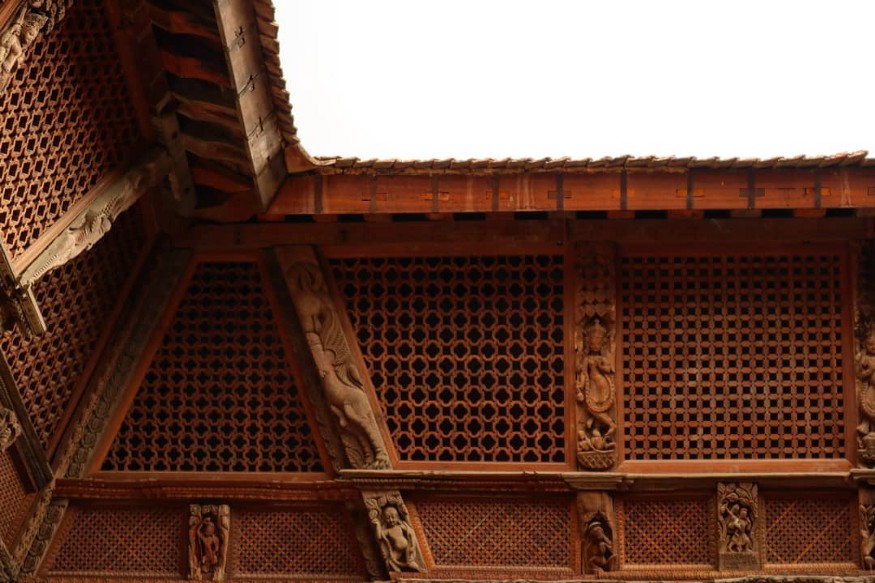
As Nepal started to open up to the outside world, the prospect for trade and handicraft products started to increase. This defined the art form based on the use of materials that expanded the professions such as metalworking, wood-carving, carpentry, block-printing, house-building, weaving, oil-pressing, liquor-distilling, wicker-work, pottery, etc. The result was Kathmandu establishing the identity of the place known as “the city full of artisans.”
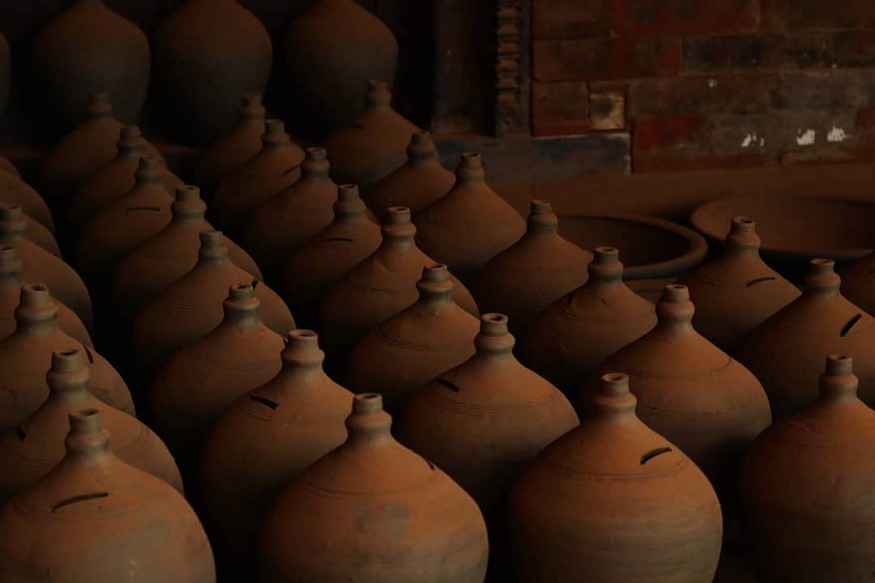
Our ancestors defined art as the embodiment of the life cycle which helped to draw spiritualism and pragmatic values; “Mandala”, the first-century art form in Buddhism is a clear example. Besides this philosophy, back then, art had sustainability embedded in it. Our ancestors had a close relationship with nature and its resources. Till 1950, the people of Kathmandu rarely bought any clothes. Poverty may be one of the reasons but all the clothes used to be made at home. The Newars of Kathmandu, especially, excelled at this. The skill of sewing, knitting, handcrafting, etc. as well as the philosophy of art has been tried to pass down from one generation to another.
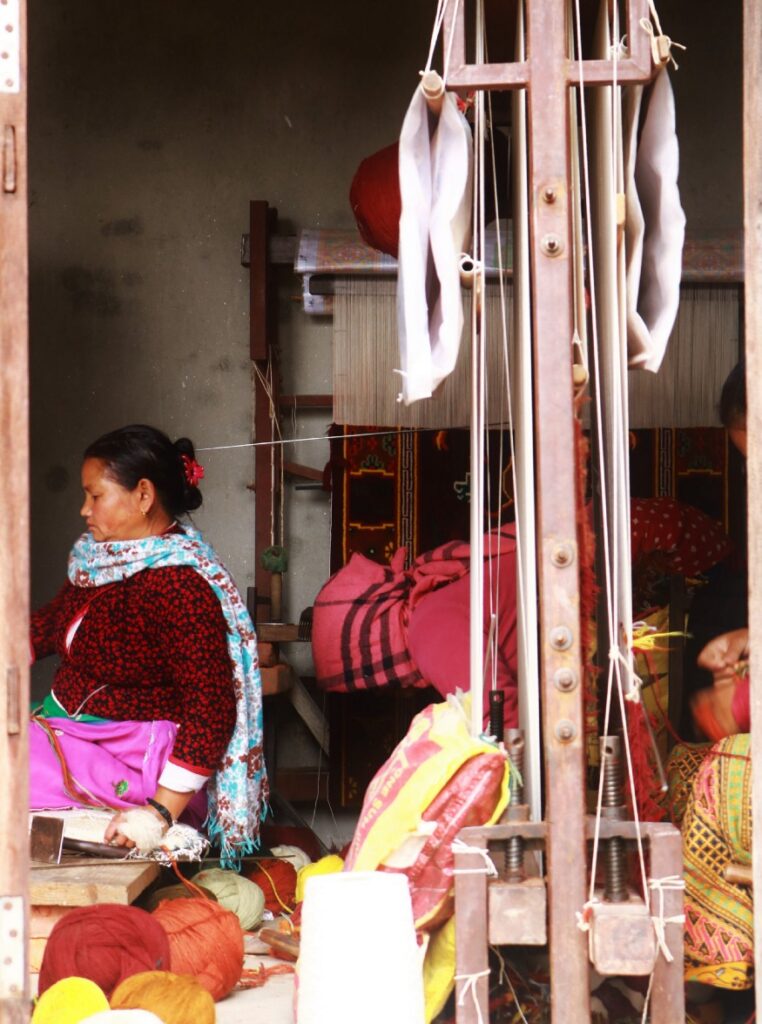
Ten-fifteen years back, there was a period where the younger generations didn’t continue in the footsteps of their elders. Most of the youths were moving abroad for studies and then settling there; the lack of opportunities in Nepal was also the result of this. The lack of government support to promoting artisan as a profession was a rare occasion. Also, many people were influenced by western lifestyles and the pursuit of higher income. After settling in aboard, only few people returned to Nepal; a country that lacked even basic facilities such as roads, drinking water, or electricity. This was the period where the import was at starting to increase every year followed by decreasing export.
Now, time is slowly changing. Many youths are trying to pocket the opportunities in Nepal itself. People have started to pursue “नेपाल मै केहि गर्न पर्छ।”
We can see many young entrepreneurs trying to create a market and job opportunities in Nepal. Many of these youths have also felt a great need to conserve our historic craftsmanship. So, they have started to collaborate with local artisans or local women where they promote traditional skills and materials; ensuring sustainability.
The new craze of startups has created a huge demand for made-in-Nepal products or handmade products in Nepal. Also, the choice of Nepal-made products is slowly expanding. Now, we can easily access high-quality shoes, bags, t-shirts, etc. which was not possible five years ago. For this growth, local artisans have played a vital role.

One of such initiatives is Samsara Creation; we are trying to bridge a gap between traditional design skills and modern design to incorporate sustainability into the fashion industry by partnering with Local artisans and fashion designers for product design and manufacturing. In this mission, local artisans are one of the key factors as their contribution has led us towards the creation of sustainable consumer products that Nepalese consumers are starting to value.
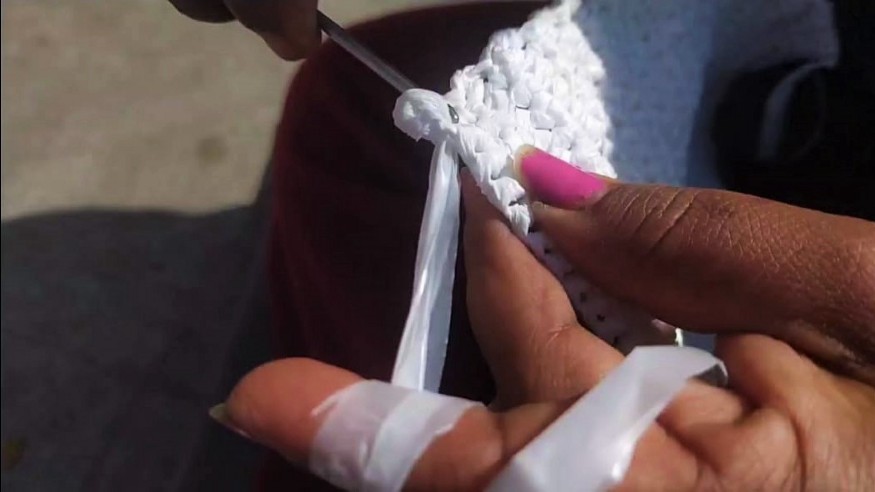
We believe that our ancestors pursued sustainable living more naturally than us and it can be passed down through traditional skills as well. One of such skills is knitting and weaving which is environment-friendly compared to machine-made. So, Samsara is closely working with local artisans to understand their life and work as professional artisans.

We believe that the exuberance and modern design skills of young designers, when collaborated with local artisans, can help us set a standard in Nepali products; especially in the context of textile products. Our initiative will also help young designers understand the way local artisans pursued designing and teach the path of sustainability. In return, local artisans will also learn about the perception of modern designers and their passion for designing.
Currently, Samsara Creation is promoting local artisans (especially women) through three major initiatives: textile upcycling, plastic recycling, and natural dyeing.
We started our journey as a textile upcycling where we are collaborating with local women of Thankot. The collaboration between Sobarna didi and our designer Jecy resulted in the upcycling of jean pants into utility accessories such as fanny packs or unisex bags.
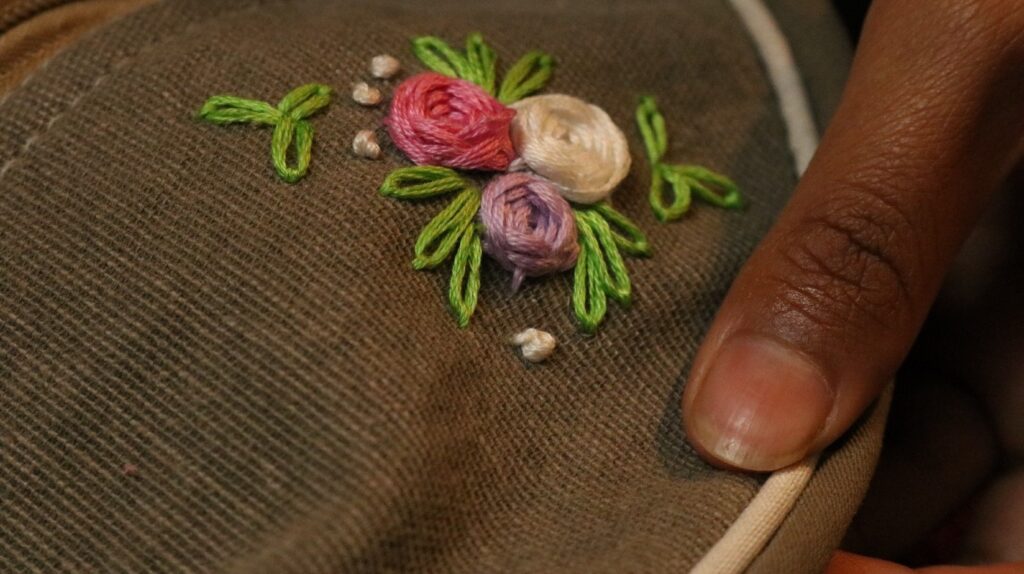
To tackle single-use plastic waste, we are mobilizing traditionally skilled local women for producing our handmade products made from recycled polythene plastics. Through this approach, we are promoting traditional artisanship, empowerment of women, and a circular economy. On the other hand, we are also collaborating and co-creating with local manufacturers for manufacturing recycled and repurposed utility products which are also contributing to the development of the local economy and Green Economy from the local level.
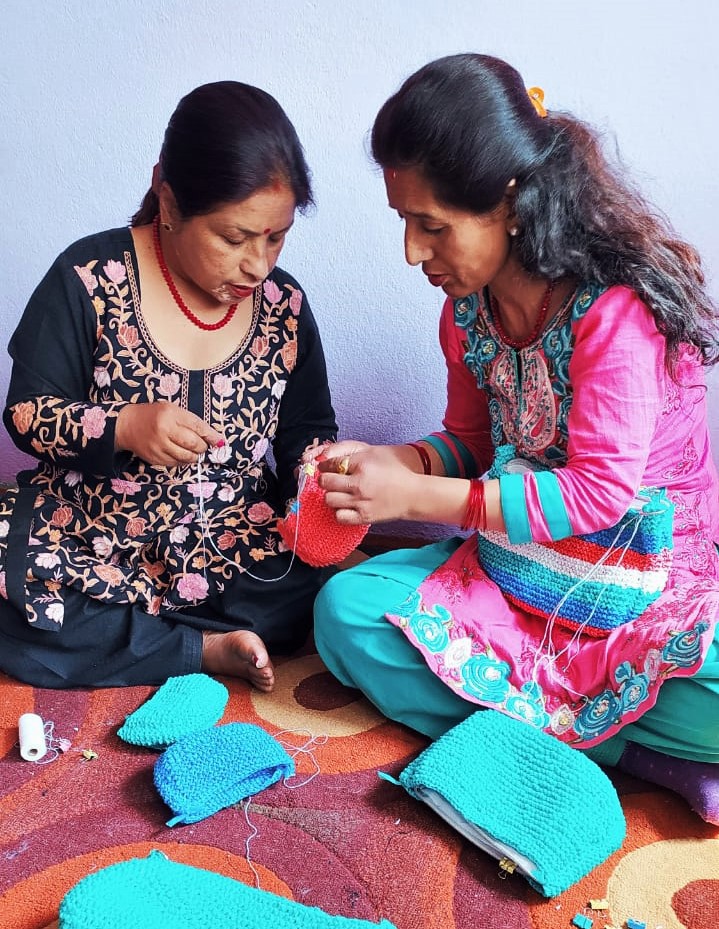
Recently, we have started our collaboration with local women of Kakani who focus on natural dyeing. As an alternative for sustainable fashion, we are also promoting natural fabrics (hemp, cotton, linen, etc.) and dyeing them naturally. This particular initiative makes people aware of existing water consumption and pollution through fast fashion or so-called modern-day fashion.


In every segment of our work, we are trying to use the medium of local artistry for quality Nepal-made products and more importantly, awareness-raising for a better environment.
Despite these changes in the urban sector, the context of rural is still the same. Due to lack of job opportunities, almost 90% of rural youths are forced to go abroad (especially in the middle east) for employment. The reality is bitter that Nepal known as the agricultural economy is forced to import the vegetables that could be easily grown here.
The urban sector might be able to catch-up to the developed nations. However, rural parts of Nepal due to lack of basic infrastructural development might now be able to catch-up. Therefore, there is a greater need for rural-urban connectivity with the promotion of local artisans and sustainability for a fair economy and income-generating opportunities. Only doing so, will make the next generations continue where we have left-off.




У місті Чернівці https://u-misti.chernivtsi.ua — це зручний портал для мешканців міста, який публікує корисні рекомендації про життя Чернівців. На інтернет-майданчику ви знайдете до актуальної інформації про активності в Чернівцях.
Профессиональный сервисный центр по ремонту кондиционеров в Москве.
Мы предлагаем: ремонт кондиционера в москве
Наши мастера оперативно устранят неисправности вашего устройства в сервисе или с выездом на дом!
сейфы встраиваемые в пол сейф встраиваемый в пол
Профессиональный сервисный центр по ремонту моноблоков в Москве.
Мы предлагаем: моноблоки кондиционеры
Наши мастера оперативно устранят неисправности вашего устройства в сервисе или с выездом на дом!
сейфы домашние сейфы для дома купить москва
взломостойкие сейфы для дома взломостойкие сейфы цена
Сайт https://u-misti.khmelnytskyi.ua — це веб-сайт для жителів Хмельницького, який містить корисні матеріали про суспільні події. На інтернет-майданчику У місті Хмельницький ви знайдете цікаві матеріали про життя в Хмельницькому.
Создание и продвижение сайта https://seosearchmsk.ru в ТОП Яндекса в Москве. Цены гибкое, высокое качество раскрутки и продвижения сайтов. Эксклюзивный дизайн и уникальное торговое предложение.
Портал https://u-misti.cherkasy.ua це інтернет-ресурс для усіх, хто цікавиться Черкасами, який містить огляди подій про суспільні події. На ресурсі У місті Черкаси знайдете цікаві матеріали про життя Черкас.
Where to play New Zealand casinos on roulette, or in online pokies. Online casinos in New Zealand for money. The best casinos of all categories operating in the country.
Профессиональный сервисный центр по ремонту бытовой техники с выездом на дом.
Мы предлагаем: сервисные центры по ремонту техники в тюмени
Наши мастера оперативно устранят неисправности вашего устройства в сервисе или с выездом на дом!
Надежные инструменты и товары для сада и авто continental contiicecontact 2
Портал Одеси https://faine-misto.od.ua/ — це веб-сайт для місцевих жителів, який публікує цікаві рекомендації про місцеві заходи. На ресурсі Файне Місто знайдете актуальні новини про життя регіону.
Профессиональный сервисный центр по ремонту гироскутеров в Москве.
Мы предлагаем: сервис по ремонту гироскутеров
Наши мастера оперативно устранят неисправности вашего устройства в сервисе или с выездом на дом!
Получай скидки и бонусы, используй Промокод Яндекс и получи отличную возможность для экономии, будь то покупки в интернет-магазинах, заказы еды или другие услуги компании.
Файне Місто https://faine-misto.vinnica.ua у Вінниці є новинним ресурсом, що висвітлює актуальні події, новини міста, інтерв’ю та аналітичні матеріали.
Профессиональный сервисный центр по ремонту планшетов в том числе Apple iPad.
Мы предлагаем: ремонт ipad москва
Наши мастера оперативно устранят неисправности вашего устройства в сервисе или с выездом на дом!
Профессиональный сервисный центр по ремонту посудомоечных машин с выездом на дом в Москве.
Мы предлагаем: ремонт посудомоечных машин москва
Наши мастера оперативно устранят неисправности вашего устройства в сервисе или с выездом на дом!
Доставка товаров и грузов https://vhp.place из Китая, Турции, Европы. Надежный посредник для оптовых поставок.
магазин техники и электроники магазины электроника товары
Ищете профессиональный Массаж в Ивантеевке наши мастера предлагают классический, расслабляющий и лечебный массаж для восстановления вашего здоровья и улучшения самочувствия. Уютная обстановка, индивидуальный подход и доступные цены. Запишитесь на массаж в Ивантеевке прямо сейчас!
Ремонт квартир под ключ https://podklyuch23.ru это комплексное решение, включающее все этапы: от проектирования до финальной отделки. Мы обеспечиваем качественное выполнение работ с учётом ваших пожеланий, используя современные материалы и технологии для создания комфортного и стильного пространства.
Широкий ассортимент товаров в секс шоп магазине поможет вам найти секс-игрушки, аксессуары и средства для улучшения отношений. Анонимная доставка и конфиденциальность гарантированы. Удовольствие начинается здесь!
Indian porn https://desiporn.one in Hindi. Only high-quality porn videos, convenient search and regular updates.